Gorilla trekking is one of the most unforgettable wildlife experiences in Africa. However, many travelers are surprised by how expensive it can be. If you're planning to see mountain gorillas in the wild, you may be wondering why the cost is so high. This guide explains everything you need to know about the costs involved—and why the price is worth it.
Why Is Gorilla Trekking So Expensive?
The cost of gorilla trekking isn’t just about the permit. There are several components involved when planning a trip to see mountain gorillas. These include:
- Gorilla permits
- Flights to Uganda or Rwanda
- Ground transportation
- Accommodation and meals
- Guiding services and park fees
- Optional items like hiking gear and camera equipment
But the biggest cost—and the most important—is the gorilla permit.
- Gorilla Permit Prices:
- Rwanda: $1,500 per person
- Uganda: $800 per person
- Democratic Republic of Congo: $400 per person
As you can see, Rwanda has the highest permit cost, followed by Uganda. Congo offers the lowest price, but due to safety concerns in certain regions, most travelers choose Uganda or Rwanda.
Why Are Gorilla Permits So Costly?
1. Mountain Gorillas Are Critically Rare
There are only around 1,000 mountain gorillas left in the world, and they can only be found in Uganda, Rwanda, and Congo. These gorillas live in protected mountain forests and are not found in any zoo on the planet. Their rarity makes the experience incredibly exclusive.
In general, when something is rare and in high demand, the cost goes up—this applies to gorilla trekking too.
2. Conservation Costs Are High
The high cost of gorilla permits is mainly driven by conservation efforts. Years ago, mountain gorillas were on the brink of extinction. Without the work of conservationists like Dian Fossey, we might not be able to see them today.
Protecting gorillas and their habitat requires millions of dollars each year. Funds from the permits are used to:
- Pay for trained rangers to protect gorillas from poachers
- Monitor gorilla health and habitat
- Support veterinary services and research
- Build and maintain park infrastructure
Before 2018, mountain gorillas were listed as critically endangered. Thanks to tourism and global conservation efforts, their numbers have now crossed 1,000—a major success story.
3. Your Permit Helps Communities Too
The money you pay for your permit doesn't go directly to the government alone. Here's how it's distributed in Uganda:
- 75% goes directly into gorilla conservation and park management
- 10% supports local communities living near the parks
- 15% goes to the government
So, when you buy a gorilla permit, you're helping to preserve endangered species, support local livelihoods, and protect forest ecosystems.
Why Many Travelers Choose Uganda for Gorilla Trekking
Due to the high cost of Rwanda permits, many tourists now prefer to land in Kigali (Rwanda) and drive to Bwindi Impenetrable Forest in Uganda. The drive is just about 4–5 hours, and permits in Uganda cost almost half of those in Rwanda.
This option helps travelers:
- Save money on permit costs
- Reduce the number of days needed for long drives
- Enjoy a wide choice of budget, mid-range, and luxury lodges
What Is the Total Cost of Gorilla Trekking?
Apart from the permit, other major costs include:
1. Accommodation
Gorilla trekking areas offer various lodges ranging from budget to luxury. Prices vary widely:
- Budget lodges: $100 – $250 per night
- Mid-range: $250 – $500 per night
- Luxury: $700 – $2,400+ per night
Choose accommodation based on your budget and preferred comfort level.
2. Transport
Travel can be by road or air.
- Road transport is done using 4x4 safari vehicles like safari vans or Land Cruisers. Land Cruisers offer more comfort but are more expensive.
- Flights are available to nearby airstrips, but they add to the total cost.
3. Meals and Tour Services
Most tour operators offer all-inclusive packages that include meals, driver-guides, park fees, and permits. Requesting a custom quote from a trusted tour company is the best way to understand the full cost.
Other Expenses to Consider
In addition to the tour package, you may have to spend extra on personal items, such as:
- Hiking boots and gloves for the trek
- Rain jacket or poncho (as it may rain in the forest)
- Camera and lenses (if you’re into photography)
- Daypack for carrying snacks and water
Tipping Etiquette
In Uganda, it is a good custom to tip guides, porters, and hotel staff. While it’s not mandatory, a small tip is a kind gesture that is always appreciated.

